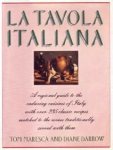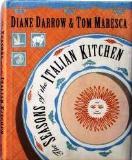Santa Claus did all right on the cookie front at our house this year. Tom, serving as Santa’s personal representative, negotiated successfully for three batches of traditional favorites, while I stipulated for the addition of one new-to-me kind.
The new one I made is Spritzgebäck, a hazelnut cookie, from a recipe in the Cooking of Germany volume of the Time-Life Foods of the World series. We love hazelnuts, and I found excellent imported Piedmontese nuts in a local specialty store. Making the dough was easy: butter, sugar, egg, vanilla, flour, and ground hazelnuts. But shaping the cookies was awful.
The dough was to go into a pastry bag fitted with a star tip and be pressed out into crescents. My dough was so thick it utterly refused to emerge. Substitutions of three increasingly large-hole tips were to no avail. I had to settle for squeezing it out, messily, from the bag alone. The best shapes I could achieve that way were clumsy semicircles.
They tasted good, though: crunchy, sweet, and nutty. Still, I don’t think this recipe will enter my holiday cookie repertoire. Happily, the traditional cookies I made later were much better behaved.
Peanut butter cookies have been part of my Christmases for as long as I can remember. I used to make them exactly as my mother did, but over the years I’ve experimented with various recipes. You can’t really go far wrong with a peanut butter cookie.
The recipe I like most, one I clipped from Saveur magazine many years ago, calls for chunky peanut butter. In all other respects we’re a smooth peanut-butter household, so usually I buy a jar of the chunky just for Christmas. This year I used the smooth I had in the pantry, and chopped some of those excellent hazelnuts into the dough. As always, the cookies came out fine: happy throwbacks to the Christmases of my youth.
For this year’s batch of Toll House cookies, I even considered putting in more of those hazelnuts. (I’d bought a lot of them!) But there were chopped walnuts in my freezer that needed to be used, so I decided to stick with them, as usual.
For these cookies I always use the recipe on the Toll House morsels bag, but I noticed that the morsels themselves weren’t quite the same this year. They’re called “dark” now, not “semisweet,” and they’re bigger. The recipe still doesn’t specify light or dark brown sugar, so I tried light brown for a change.
They were good cookies too, though a little different from my standard. More crumbly and less chewy – possibly from the lighter brown sugar? The morsels seemed more intensely chocolaty, which tended to mask the walnuts’ flavor. Next year back to the drawing board, to recover the old style.
My third Christmas cookie classic was Ruggelach. Though I make these tiny cream-cheese pastries almost every year, from a recipe of my mother’s, I often vary the filling ingredients. This year I decided to try dates and – guess what! – hazelnuts. They were delicious, as always. Beautifully nutty, with rich little centers of fruit sweetness from the dates.
I’d started my cookie making fairly early in the month this year, so it required a certain amount of self-control every day, as we passed them sitting in their decorative tins, to be sure there’d be some left for Santa. Happily, there were.










